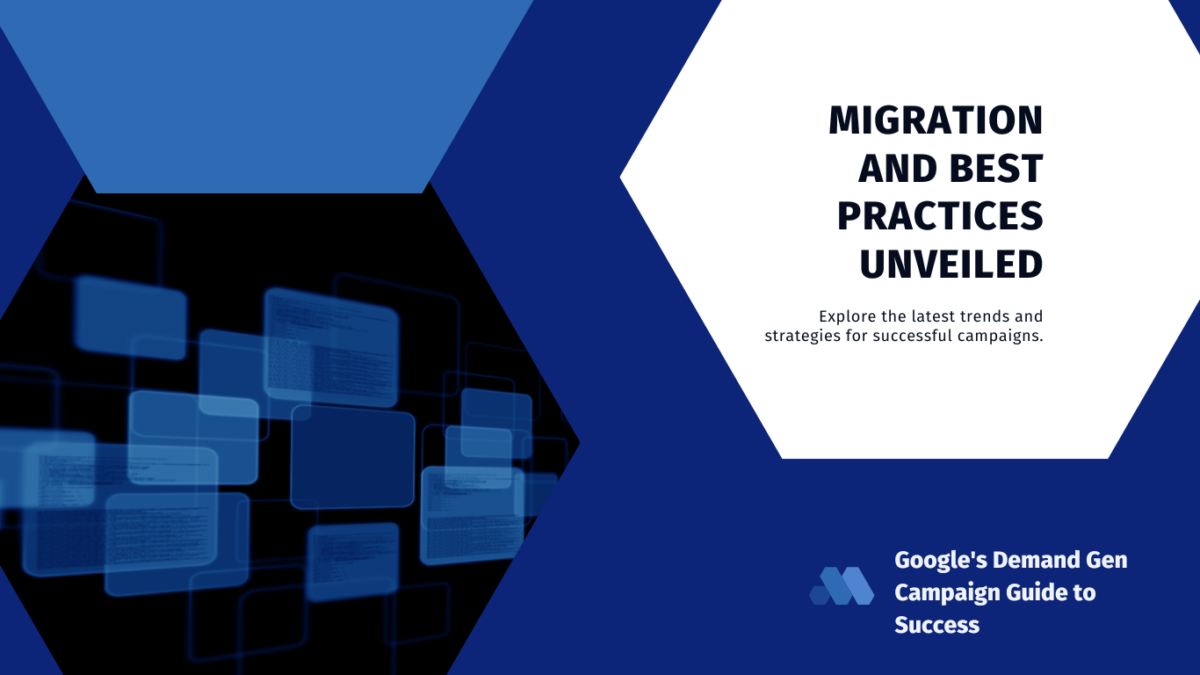In the world of digital marketing, demand generation campaigns serve as the cornerstone for driving brand awareness, engaging target audiences, and generating leads. Google, as the leading search engine, provides a comprehensive set of tools that empower businesses to harness this vast potential. In this blog, we embark on an in-depth exploration of Google Demand Generation campaigns, focusing on migration strategies and best practices.
The Power of Google Demand Generation💪
Google's supremacy as the world's leading search engine, with a commanding 92% of the global market share, is unmatched. With over 3.5 billion daily searches through Google Ads, it's an indispensable platform for marketers. Google Demand Generation campaigns provide an unparalleled avenue for enhancing brand visibility and engaging specific target audiences. Its versatile targeting options, including demographics, interests, and keywords, empower businesses to effectively drive awareness and generate leads, making it a cornerstone of successful online marketing strategies.
Migration Strategies🕊️
Evaluate Performance: Analyze the effectiveness of your existing campaigns on other platforms to identify top-performing elements. 1. Replicate Success: Replicate successful ad creatives and audience segments from other platforms when migrating to Google Ads. Smart Bidding Adoption: Utilize Google's automated bidding strategies, like Target CPA or Maximize Conversions, to optimize ad spend effectively. 2. Responsive Search Ads: Implement responsive search ads and experiment with different headlines and descriptions to enhance click-through rates. 3. Continuous Testing: Regularly monitor performance and conduct A/B testing to refine and improve campaign effectiveness.
Best Practices🙂
Let's dive into key best practices, accompanied by real-world examples showcasing their effectiveness:
1. Leveraging Remarketing:💹
Remarketing can boost conversion rates significantly, with potential increases of up to 161%. Implement dynamic remarketing to display products or services users have previously viewed on your website, reinforcing their interest. For example, A travel agency employed dynamic remarketing, displaying previously viewed vacation packages. This strategy resulted in a 30% increase in bookings.
2. Audience Segmentation:🧑🤝🧑
Segment your audience based on demographics, interests, and behavior. Studies indicate that personalized campaigns can yield improvements of 10% or more in conversion rates. For Instance, An e-commerce retailer segmented their audience based on browsing behavior, tailoring product recommendations and achieving a 12% increase in conversions.
3. Mobile Optimization:📳
In 2021, 56% of Google's search traffic came from mobile devices. Ensure that your landing pages and ad creatives are fully optimized for mobile users to capture this growing segment of the audience effectively. For example, A restaurant chain optimized its mobile site for online reservations, resulting in a 20% increase in bookings made through mobile devices.
Conclusion
In the ever-evolving digital marketing landscape, it is essential to stay updated with the latest trends and insights within Google Ads to maintain a competitive edge. Armed with the knowledge, statistics, data, and real-world examples provided in this blog, you are now better prepared to master the art of Google Demand Generation campaigns and achieve remarkable results in the world of online marketing.
